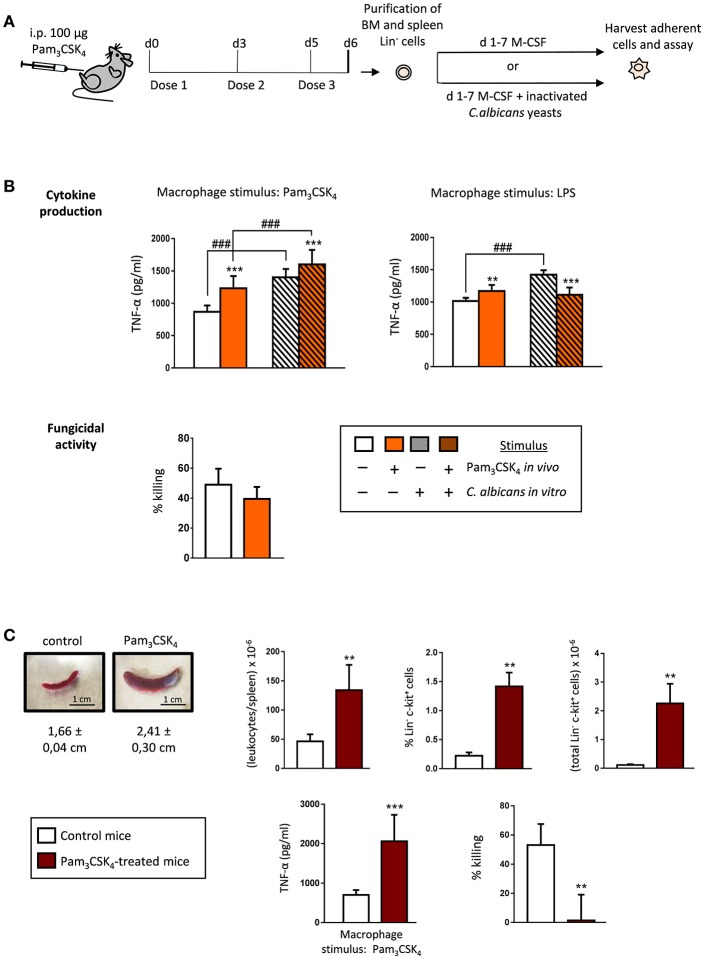Figure 3.
Extended TLR2 agonist treatment impacts the cytokine production and the fungicidal activity of the ex vivo produced macrophages derived from bone marrow and spleen HSPCs. (A) Schematic protocol (as described in section Materials and Methods). WT mice were given 100 μg of Pam3CSK4 by intraperitoneal injection at days 0, 3, and 5 (3 doses), and 24 h after the final dose, mice were sacrificed to isolate the bone marrow and the spleen. Lin− HSPCs purified from bone marrow and spleen were plated at a density of 200,000 cells in 4 ml of culture medium containing SCF and M-CSF, and incubated for 7 days to induce macrophage production, in the presence or absence of inactivated yeasts of C. albicans (1:7.5 murine cell:yeast ratio). (B) Cytokine production and fungicidal activity of macrophages derived from bone marrow HSPCs. Macrophages were plated and challenged as indicated in Figure 1. (C) Appearance and size of representative spleens from control (left) and treated (right) mice. Total leukocytes per spleen, and frequency and absolute numbers of Lin− and c-Kit+ cells in the spleens, as determined by flow cytometry (n = 2 mice per treatment group). TNF-α production and fungicidal activity of macrophages derived from spleen HSPCs (macrophages were plated and challenged as indicated in Figure 1B). Triplicate samples were analyzed in each assay. Results are expressed as means ± SD of pooled data from two experiments. **P < 0.01, and ***P < 0.001 with respect to control macrophages derived from control untreated mice, and ###P < 0.001 with respect to cytokine production by macrophages derived from HSPCs differentiated with M-CSF only, in the absence of inactivated yeasts.

